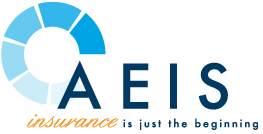Next time you receive a bill from a physician or a hospital, you may want to compare it with an Explanation of Benefits (EOB).
As the insurer Cigna states, an EOB is “a statement from your health insurance plan describing what costs it will cover for medical care or products you’ve received.” While they may look different depending on the insurance company, EOBs help to explain how much the cost of your care for a visit was, how much your insurance carrier paid for it, and how much your provider may bill you for. Your insurance negotiates prices with your provider so there will be an “allowed amount” section on your EOB of how much a doctor could charge your insurance. An EOB could also include information on the claim, member details, deductibles, and copays.
But an EOB is NOT a bill. It is simply the explanation of charges, allowed charges, and insurance payments for a service to your medical provider. You will receive a bill separately from your physician or hospital.
While you look over your EOB, make sure to look at the section that states how much you owe your hospital or physician. This section could be worded as “total patient cost,” “total provider may bill you,” or something along those lines. When you receive your actual bill, check the charged amount with your EOB information because sometimes hospitals or physicians could make a mistake when billing you.
In addition be sure that your EOB shows any copays or amounts you have already paid to the provider at the time of your visit. If your copay that you already paid does not appear on your EOB or bill, contact your provider and insurance carrier to make sure that it is corrected.
If you have a PPO plan, you also want to make sure on your EOB that the insurance carrier has correctly coded your provider as “in-network,” if they are an in-network provider. A PPO plan gives you the option to see providers that are in or out of your network. Your insurance carrier has negotiated lower costs with in-network providers so you will almost always pay less out of your pocket if you stay with providers in your network as opposed to out of network providers.
Essentially EOBs are there to show transparency and to catch billing errors. Michelle*, a graphic designer from Northern California, quickly learned this lesson. Recently Michelle opened up her bill from her dermatologist and found that she was charged hundreds of dollars for a visit. She had an exam and a couple of procedures but was skeptical of the high price so she checked her EOB online. She realized that her doctor had charged her for a service that her insurance did not allow for her physician to charge. She called her doctor and explained what her EOB said. In a few weeks, her doctor’s office worked with her insurance and fixed their billing mistake. Because of her diligence, she saved nearly $300.
A few months later her husband, Jack, was charged thousands of dollars for procedures from his doctor. But Jack checked his EOB and quickly saw that all the charges were for preventative procedures, which Jack was not responsible for paying under his health plan. He called his doctor and explained what the EOB said. His doctor’s office realized that they had made a mistake and told him not to pay the bill. How much did he save by checking his EOB? Around $2,000. If Michelle and Jack hadn’t read over their EOBs, they may have ended up paying for these unnecessary charges.
EOBs will either be mailed to you or available for access online. If you have a digital account with your insurance, sign in and check under EOBs to download your latest ones. If you are not sure how to access your EOBs, contact your broker or insurance company for assistance.
While billing mistakes are rare and it may be extra work to check your EOB, it never hurts and you could avoid paying fees that should not be there. When in doubt, check your EOB.
*All identifying information has been changed and permission was granted to be included in this post.
Disclaimer: This blog is intended to be informational and does not constitute legal advice regarding any specific situation. Should you require further compliance assistance or legal advice, please consult a licensed attorney.
By Wyatt Bland
We're here to help.
Schedule a free phone consultation today.
Latest Insights
Advanced Estate & Insurance Services, Inc. CA License #0M90887
Website Design & SEO by RivalMind




